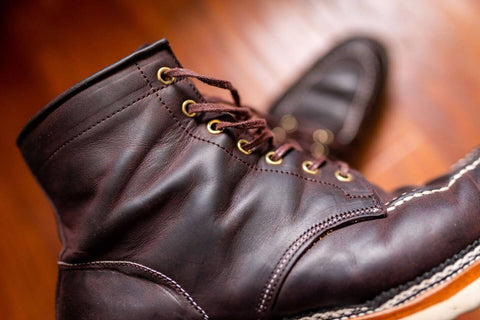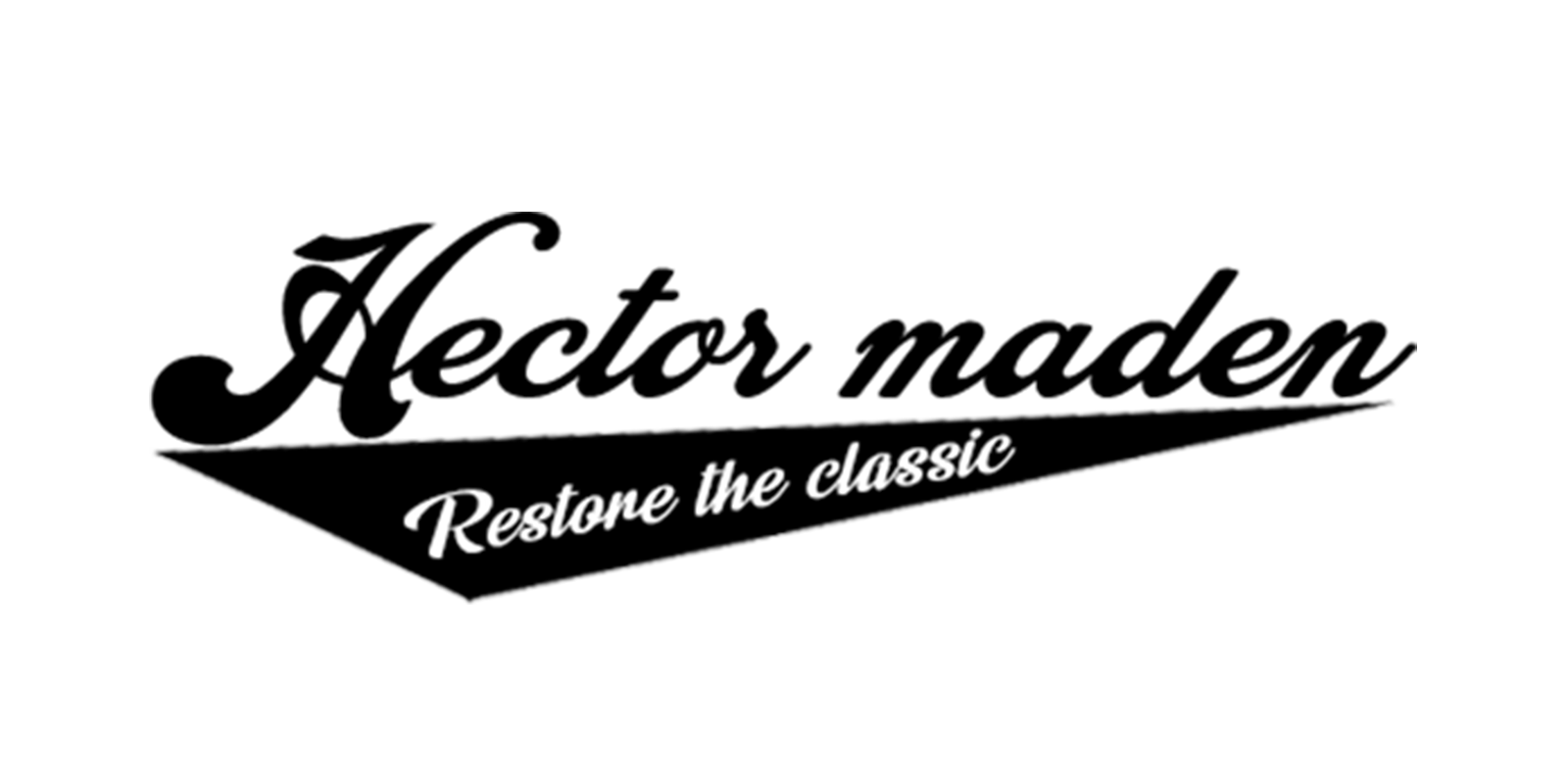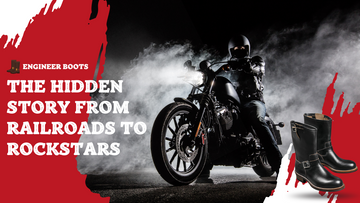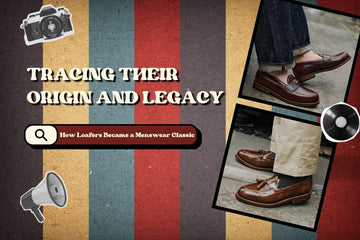Work boots are roughly divided into smooth leather and suede, which can cover 95% of work boots Here we will explain the tutorial based on these two surface materials.
Glossy skin
Please keep in mind the maintenance trilogy: brushing and cleaning - oiling - polishing
1.Brush dust
The most basic cleaning is to clean the dust. Use a horsehair brush to brush the dust. Generally speaking, the bigger the brush, the more convenient it is to brush, and the dust visible on the surface can be cleaned up. The following is the effect after brushing the gray. Since the brush has a certain polishing effect, the leather after brushing already has a good gloss.
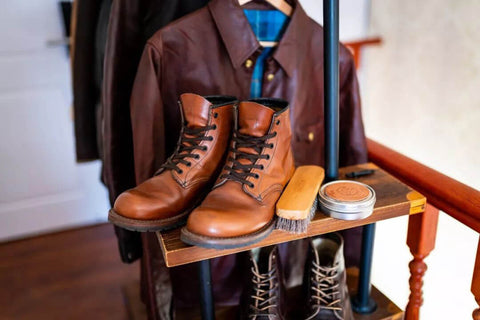
It is worth noting that for hidden dust cleaning, a small brush is required, which can easily clean up the dust hidden in the gaps along the strip.
If there are some stubborn stains on the handmade boots, the solution is to use a damp cloth and wipe the dirty area with a little force to clean the surface
If you can't just wipe it off with water, then you should consider using a leather cleaning product to clean it. It is very simple to use. After spraying, wipe it with a sponge. If it can't be wiped off, just wipe it several times. Generally, the traces of stains can be faded in the end.

If you still can't get it off, consider the last operation: use saddle soap
Generally, I do not recommend using saddle soap, because it is difficult to master the strength, and it is easy to damage the skin and discolor. Unless you can't stand the stubborn stains after lightening, it is not recommended. When using saddle soap, you must master the strength, starting from a very light strength, and then the saddle soap has a strong ability to remove oil, so it needs to be oiled after cleaning.
2.Oiling
After cleaning the dust and stubborn stains on the surface, it will affect the surface cortex of the handmade boot. Therefore, after cleaning, it is necessary to use the nursing oil to oil the leather surface to maintain the gloss of the leather surface.
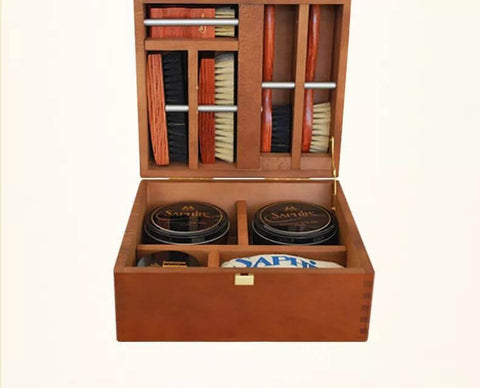
To put it simply, there are 3 types of oils:
2.1 Conditioner
The function of Conditioner is cleaning + moisturizing + brightening. It is a product with three functions in one, so it can probably be translated as something that keeps leather shoes in state, which is easier to understand.
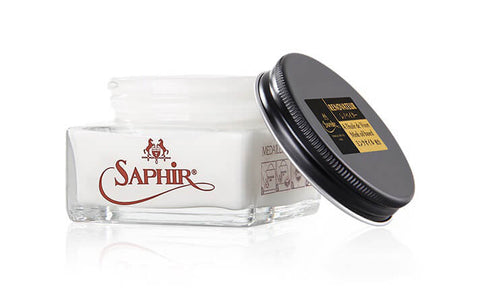
2.2 Creme shoe cream
Creme shoe milk mainly plays the role of complementing color and nourishing leather. The ingredients generally contain wax, animal or vegetable oil, dyes, solvents, etc. If you buy colorless, there is no dye.
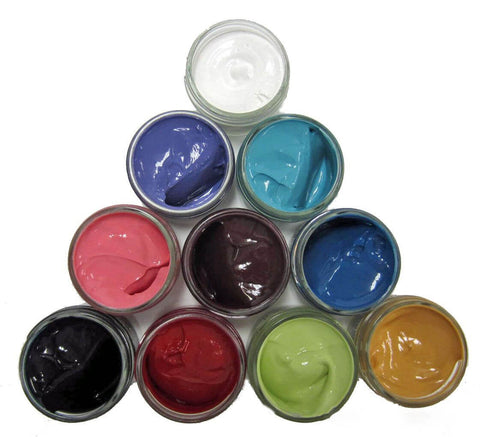
2.3 Wax shoe wax
Mainly play the role of bright light, with fine polishing can play a mirror effect.
Regarding the choice of oil, hand made work boots do not need to be nourishing and complementary like dress shoes, but only need some shoe milk with a good moisturizing effect.
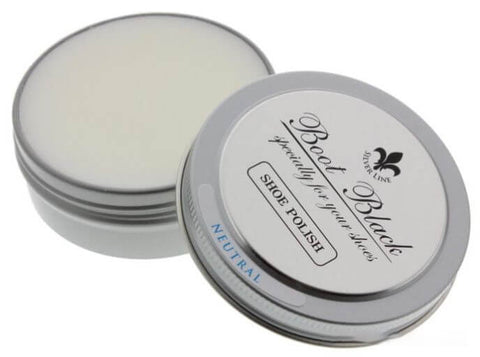
Precautions:
When it comes to work boot care, the difference between oils is nowhere near as big as their price difference. In addition, it should be noted that most of the higher-grade handmade leather boots (Red Wing, Chippewa, Wesco, White's Boots and above, etc.) often use oily leather for the upper, so there is no need to frequently use too much oil. High shoe polish (such as pure mink oil) to avoid excess leather oil and dirt clogging pores
Especially for many newcomers to handmade boots mens boots, they do not know the amount of oil to be applied. Taking this into account, I recommend that you buy shoe cream to care for the best handmade boots, because the oil content of shoe cream is generally lower than that of pure oil such as mink oil. Too much swipe on the hand and it won't darken as easily as mink oil.
Common shoe milk choices are: French Shafia, Spanish TRG, French Famaco, Australian Oakwood, etc. They are all suitable for most types of leather (corridor leather will be specially marked).
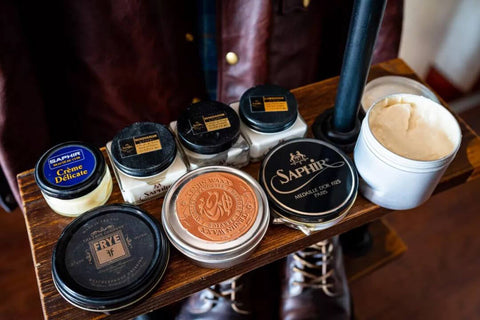
As for the frequency of oiling, this depends on the frequency of wearing and the type of leather. If you wear it very diligently (for example, more than 4 times a week), it will be about once every 2 to 3 months. If the frequency of wearing is not high, it is also possible to wear it once every six months or 9 months. It is worth mentioning that if you encounter rain when you wear it, remember the last oil after coming back to dry.
Don't apply too much at one time, just apply a layer evenly. As for the oiling tool, it is more optional, you can use a cloth, you can also use a brush to stick the oil up, or you can directly wipe it by hand. Note that it is best not to use a sponge, because the sponge is easy to absorb the oil, causing a relatively large waste.
Similar to the time of brushing the ash, the strip should also be oiled here, or use a small brush to solve it, just stick a little and brush it on.

In addition to the welt, pay attention to regularly rubbing the midsole (that is, the part that is in contact with the sole of the foot). After all, the midsole is also a large piece of skin. If it is not moistened for too long, it will also be dry and cracked. processed.
3.Polishing
After brushing the ash and oiling, the next thing to do is to polish it. It is far less complicated than formal shoes. It only needs to stand for 1 hour for the leather to absorb the oil, and then use a brush to brush the entire upper again.

Suede
Many people say that the fur is unnecessary, and that the older and dirtier it is, the more it feels. But the anti-fur material also needs the necessary cleaning, the following is the cleaning tutorial.

1.Brush gray
The cleaning process is the same as the smooth leather surface, using a horse brush to clean the surface of the shoe.
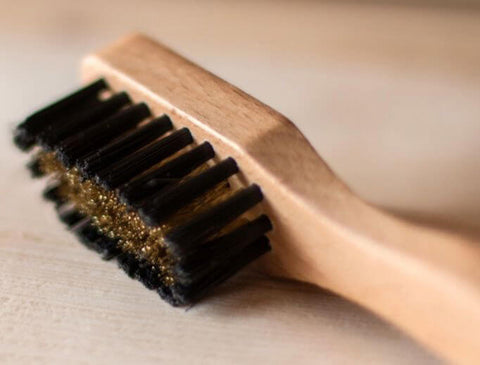
2.Brush the bristles
To put it simply, it is to use a copper wire brush to brush the fur of the suede upright, and then it can be easier to clean off all kinds of stains and dust on the suede. Be careful when using it with moderate force.
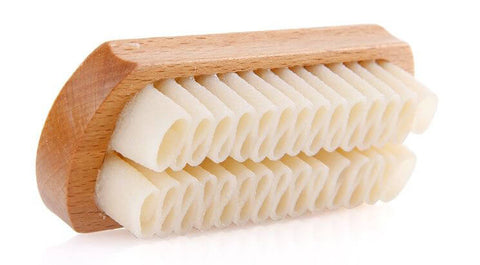
3.Cleaning
After the hair stands up, use a raw rubber wipe to wipe off all the dirty places, and finally use a brush to brush off the dust, and the daily maintenance is over. If it is a pair of suede that is too dirty, then after these steps are completed, you need to wet it with water and use a suede cleaner to do a thorough cleaning.
Of course, if you have the habit of brushing the dust with a brush every time you wear it, then the shoes will definitely not get dirty. Both the fluffing and cleaning steps can be omitted.
Finally, generally speaking, the suede does not need to be oiled in a short period of time. If you feel that the condition is not good after wearing it for several years, you can use it. If you want to use it, you must also use the special oil for suede, which can moisturize the leather to a certain extent.
4.About waterproof spray
The specific use depends on personal preference. The waterproof spray is very effective to prevent water splashing in a short time, but it will not have much effect if you walk outside for a long time in the rain. After you come back, wipe it dry and oil it again for care. I didn't say it).
The above is a tutorial on cleaning the uppers of the two types of work boots. If you just need to clean the work boots, I hope this article can help you
